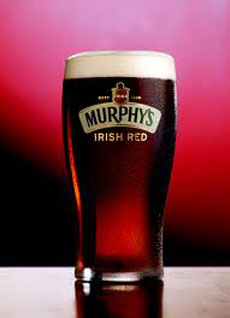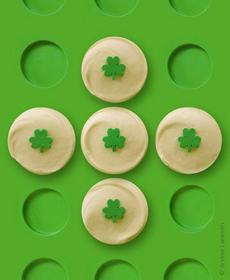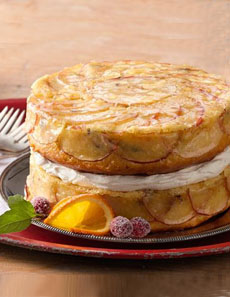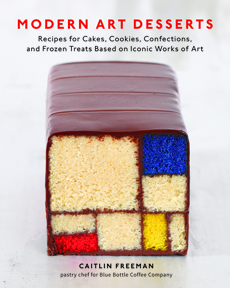|

A glass of Murphy’s shows off the chocolaty
color. It also has chocolaty flavors, and a
sweetness which makes it an ideal “dessert
beer.” Photo courtesy Murphy’s.
|
|
Many people celebrate St. Patrick’s Day with beer. But this is not the occasion to pull out your favorite American craft beers or mass-market standards such as Bud, Coors or Miller.
No, this is time for Irish beer.
You’ve got two choices here:
Imported beers brewed in Ireland
Irish-style beers brewed in the U.S.
There is no one style of Irish beer. The brews range from light and crisp to strong, rich and full-bodied for sipping, to light and crisp. So whatever your style of choice, you’ll find an Irish beer or two that fits the bill.
But lager is the style of choice in the Emerald Isle, accounting for 60% of the beer sold. Stout is the second favorite at 34%, and ale comprises the remaining 6% is Ale. [Source: Irish Beer Market Survey 2010]
How about an Irish beer tasting party for St. Patrick’s Day? The selection will depend on what’s available in your area, but here are brands to look for.
|
Irish Lager
Harp Lager, perhaps the best-known Irish lager in the U.S., is a crisp, light lager, clean and refreshing.
Porterhouse Bohemia is a black lager style that’s relatively new to Ireland. The recipe was developed by a Czech brewer using Pilsner Urquell yeast, but delivers the roasted chocolate flavor that Irish stout drinkers crave.
*Not all oyster stouts are made with oysters. The name indicates a style of stout, popular with the oysters served at pubs.
|
|
Irish Stout
Beamish is a bit lighter and spicier than the iconic Guinness, dark and chocolaty.
Guinness Draught, the most famous of Irish beers, is rich and creamy with roasty malts and hints of chocolate. Compare it with the stonger Extra Stout and Guinness Foreign Extra Stout, hoppier like an I.P.A. and higher in alcohol.
Murphy’s Irish Stout (photo above), lighter and sweeter than the first two, has caramel, chocolate and espresso flavors that make it just right for dessert. Seriously—try it with an apple tart.
Ohara’s Irish Stout is an old-school style: robust, full-bodied and hoppy with roasty notes from the barley and a subtle sweetness. O’Hara’s Celtic Stout has a very different profile: smooth and dry with flavors of coffee and licorice.
Porterhouse Oyster Stout is actually brewed with fresh oysters, shucked into the tank*. The oyster flavor is very subtle (it has been compared to the brininess in an Asian fish sauce), and oyster lovers might prefer that those oysters were in front of them on the half shell. But they do create a different flavor profile, which includes some conventional stout flavors (creamy, roasty, malty).
|
|

Irish red ale has a ruby hue—naturally, from roasted barley or in lesser brews, from artificial coloring. Photo courtesy Murphy’s Irish Ale.
|
|
Irish Ale
Kilkenny Irish Cream Ale, smooth and creamy, dates back to the 14th century. Brewed by Guinness, the amber ale has been described as a less hoppy Smithwick’s. It has a creamy head like Guinness, a malty aroma and flavor and is sweet and creamy on the palate, offset by a touch of bitterness.
Murphy’s Irish Red (photo above) does have a red hue, generated by small amounts of roasted barley (caveat: some manufacturers artificially color their “Irish red” beers red). In America, darker amber ales are sometimes labeled (or mis-labeled) as red ales. Murphy’s Irish Red is the real deal: dry, crisp, hoppy and highly carbonated. It delivers hints of caramel and fruit.
O’Hara’s Irish Wheat, a golden wheat ale, is a lighter thirst-quencher in the style of Belgian wheat beers. It delivers notes of bananas, peaches and plums.
Smithwick’s Irish Ale dates back to the 14th century; Smithwick’s is Ireland’s oldest operating brewery (and the largest ale producer in Ireland). With a similar profile to Murphy’s, it delivers a deep caramel maltiness and a hint of hops and roasted barley, coffee and sweet fruits.
DON’T LIKE BEER?
Look for Irish hard cider. It’s a relative newcomer—the first large commercial batches were brewed in the mid-1930s by William Magner. Cider now accounts for 12% of Ireland’s “beer market,” much of that Magner’s Irish Cider, which can be found in the U.S.
|
|








